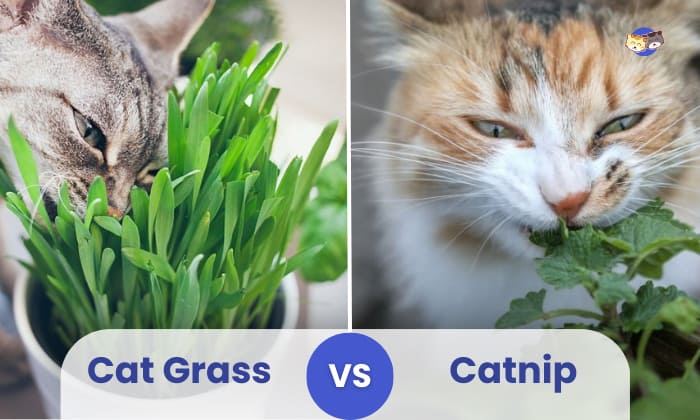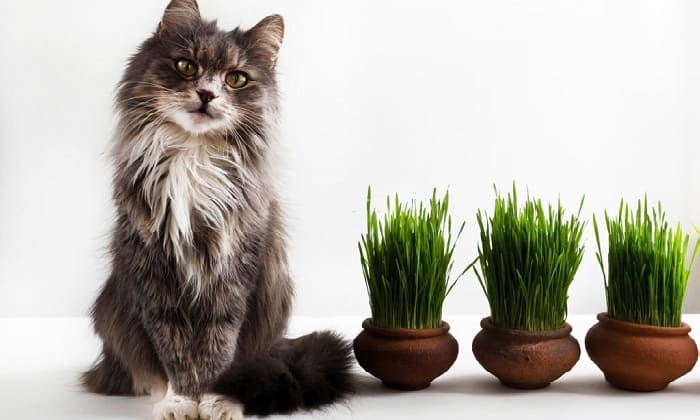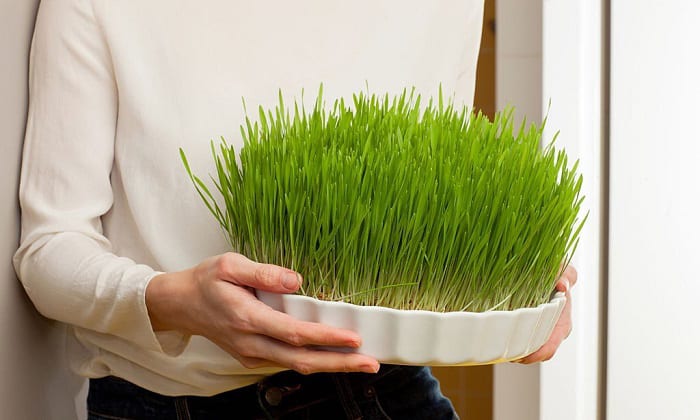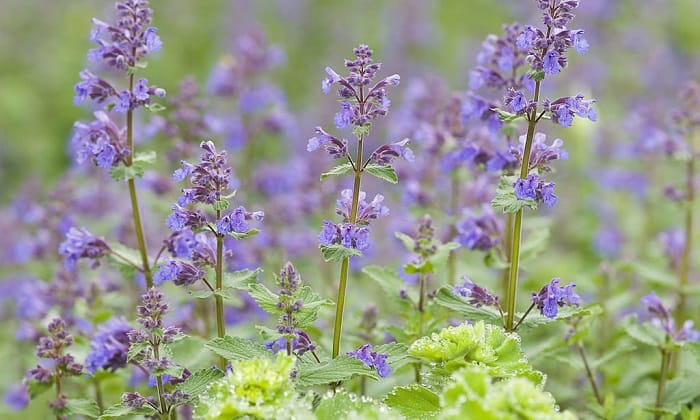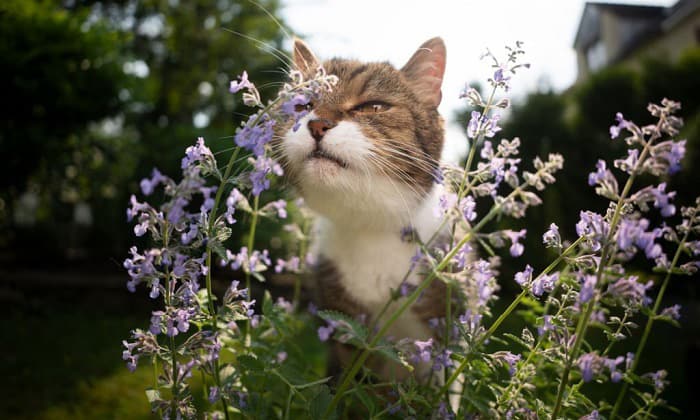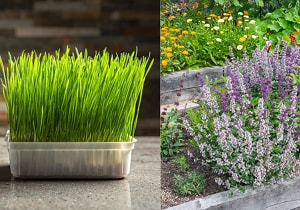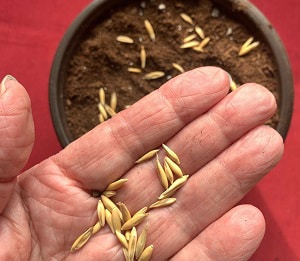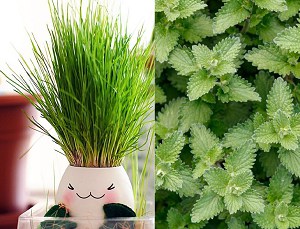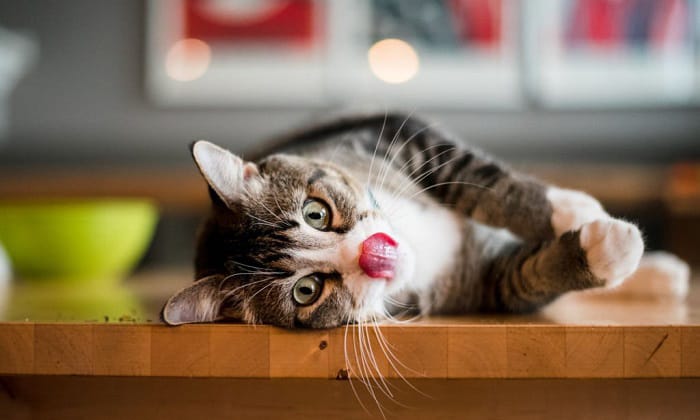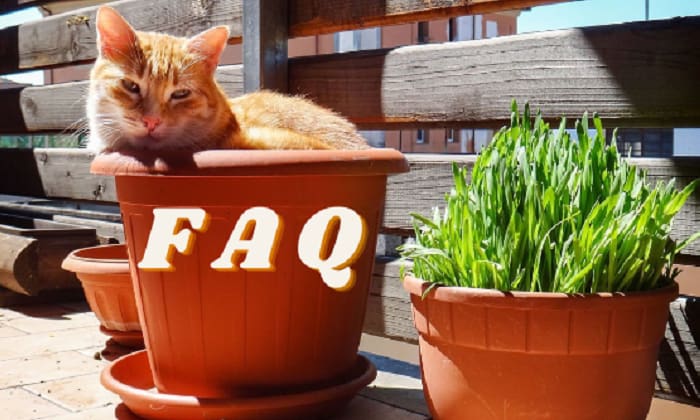Is cat grass the same as catnip? Some feline caretakers are unable to differentiate between cat grass vs. catnip.
The reason is that they think these names pertain to the same type of plant. But in reality, cat grass and catnip are entirely different. These plants even have different effects when ingested by your feline friend.
Knowing these differences is crucial in picking which grass is ideal for your pet.
| Cat Grass | Catnip | |
| Plant Type | A mixture of grasses grown from seeds (e.g., barley, rye, wheat, and oats) | An herbaceous plant belonging to the mint family |
| Origin | Commercially grown and sold | North America, Asia, the Middle East, China, and Europe |
| Appearance | Thin, bright green stalks that resemble lawn grasses. Measures 2 to 3 feet high | Heart-shaped gray-green, serrated leaves covered in fine hairs. |
| Toxicity | No | No |
| Effects On Felines | None | Mind-altering |
| Usage for cats | To be eaten | To be rolled in or eaten |
Table of Contents
What Exactly is Cat Grass?
Cat grass is not a term for a single plant species. Instead, it is a mixture of grasses cultivated from seeds, including barley, rye, wheat, oats, and alfalfa.
Felines usually like grazing on grass as they can get vitamins, such as folic acid.
Cat grass plant is an ideal alternative for your pets who hate regular house plants and grass.
You can purchase it as seeds in a small container, which you need to cultivate and grow indoors for your pet to enjoy.
Considering what seeds are cat grass made of, it is evident that it does not produce any euphoric effect on your feline friend.
What Does Cat Grass Do to Felines?
Cats are picky eaters, not to mention that they have sensitive stomachs. So, apart from their regular protein diet, you need to reinforce their food with something that can aid their digestion.
Cat grass benefits felines like vegetables benefit people – it provides fibers, aiding digestion and waste elimination. The fibers from grass feed the good bacteria in your pet’s guts, resulting in regular bowel movements.
In addition, chewing on cat grass entertains your feline friend and freshens their breath.
What is Catnip?
Catnip (Nepeta cataria) is an herb related to mint. It is a bush with elongated branches and gray-green leaves.
Catnip is said to have medicinal properties. Back then, people used it for making tea due to its supposed ability to relieve coughs.
What Does Catnip Do?
While no studies prove it yet, researchers suggest that catnip causes a feline’s brain to release the happy hormones endorphins. As a result, catnip has a euphoric effect on cats.
When smelled or ingested, your pet may feel “high” or overly excited. Still, it is worth noting that the effects vary from one feline to another.
While some cats become hyperactive, others become aggressive. They may scratch or growl at you if you try to approach them.
Catnip has such an effect on felines due to its nepetalactone content. When smelled or ingested, nepetalactone mimics a cat’s sex hormones, which makes your pet feel in heat.
Related: Why Doesn’t My Cat Like Catnip? – 7 Main Reasons
Similarities Between Cat Grass and Catnip
There are not many similarities between cat grass and catnip. However, the primary similarity is that both are safe for your feline to consume.
Catnip and cat grass are good for cats as they provide benefits to their gut health.
Apart from aiding digestion, cat grass also works as a natural relief for your pet’s gassy and upset stomach. The fiber in cat grass can even help push out the hairballs your cat has ingested.
Similarly, catnip can also help a cat get rid of a bloating and upset stomach. It also acts as a relaxant, so your pet will remain calm while the catnip is treating its digestive upset.
Differences Between Cat Grass and Catnip
While people often use their names interchangeably, cat grass and catnip are completely different from each other in more factors than one.
1. Type of plant
As mentioned, cat grass consists of different plants grown from seeds. The cat grass you can get from your local shop consists of various types of cat grass, including cat grass oats, alfalfa, and other similar-looking plants.
If you search for information online, you may come across articles mentioning cat grass’ scientific name, Dactalys glomerata. However, it is important not to mistake it for the cat grass you can grow indoors.
While cat grass or orchard grass is the common name for Dactalys glomerata, it is different from the cat grass you can purchase commercially. But it can also satisfy your feline’s craving to chew on plants, so you can buy this cat grass at Bunnings and let your feline munch on it.
Meanwhile, catnip is an herb related to mint. Unlike planting cat grass, which you can do indoors, catnip is usually grown outdoors as it is a bushy plant.
The aroma of catnip is appealing to your feline friends.
2. Origin
The seeds used for commercial cat grass grow almost globally. For this reason, there is no way to pinpoint the origin of cat grass.
This fact makes cat grass easy to grow regardless of where your location is. You can collect cat grass seeds and plant them in a pot inside your home.
You can also buy a kit that contains everything you need to grow cat grass. If you are wondering where to buy cat grass, you can find a plethora of choices in online shops like Amazon.
Catnip is native to North America, Asia, the Middle East, China, and Europe. You can grow a catnip if you live in places with temperatures between -30 to 30 degrees Fahrenheit.
But if you live in areas where catnip cannot grow, you can buy dried catnip in your local pet shop or online.
3. Appearance
Cat grass looks like the wild grasses you’ll see on your lawn. It has long, thin, and flat leaves that are bright green in color.
If you grow cat grass in a large pot, it can reach a height of 2 to 3 feet. Indoor cat grass grown in grows kits is usually smaller, measuring only a few inches high.
Meanwhile, catnip looks a bit similar to mint. It has heart-shaped, fuzzy leaves with serrated edges.
Mature catnip leaves are gray-green, sometimes almost blue in color. This plant can grow as high as 2 to 3 feet.
4. Usage
The use of cat grass is to satisfy your feline roughage cravings. They provide your pet with the daily fiber it needs to improve its digestive health.
On the other hand, catnip has an entirely different purpose for felines. When ingested or inhaled by cats, catnip makes them feel “high.”
For this reason, you can use catnip to relieve your feline friend’s anxiety, stress, and depression. You may even bathe your pet with catnip-infused water to relieve skin irritation.
The Pros and Cons of Cat Grass and Catnip
Cat Grass
- Excellent fiber source
- Provides cats with vitamins and minerals
- Helps in pushing out hairballs
- Works as a good enrichment activity for cats
- Felines throw up after eating grass, so you’ll have to clean after them.
Catnip
- Helps cat remain calm and relaxed
- Cats are attracted to catnip, so you can use it as a training treat
- Helps with bloating and stomach pain
- Catnip overdose may cause nausea, diarrhea, and vomiting to felines
- Does not have nutritional benefits
Frequently Asked Questions
Is cat grass and catnip safe for cats?
The catnip and cat grass used for felines are completely safe for them. However, you need to ensure moderate consumption, as an overdose can make your feline suffer from stomach pain.
You may even use cat grass for dogs to relieve stomach issues.
Can a cat eat too much cat grass?
While too much cat grass is not toxic to felines, consuming too much may cause excessive vomiting, diarrhea, and nausea. So, giving your feline too much cat grass is not ideal.
If you are wondering how much cat grass should a cat eat, veterinarians recommend only feeding your pet less than 10 percent of its caloric intake or even less if you are preparing cat grass for kittens.
How long should cat grass last?
Cat grass should last for about 2 to 3 weeks. However, a cat grass’ lifespan may change depending on the environment’s temperature, sunlight, and humidity.
Conclusion
Some people believe that cat grass makes cats high. But in reality, cat grass does not have any euphoric effect.
This fact makes cat grass safe for cats regardless of their age.
If you seek to make your cat feel a euphoric experience, the ideal choice is catnip, as it has mind-altering effects.
After everything that’s said, we hope that this article helped you understand the differences between cat grass vs. catnip.

I am Amy Sawy, a Doctor of Veterinary Medicine (DVM) graduate from the University of Kansas. y husband, Dr. Plummer, and I own a veterinary clinic in Phillipsburg, Kansas. In addition to my professional background, I am a devoted pet owner myself, with a household that includes dogs, rodents, and most notably, cats – a total of five felines in my home.
In 2020, I joined an organization as a professional writer, leveraging my experience and collaborating with my team to deliver the most valuable information for your cat’s care.


